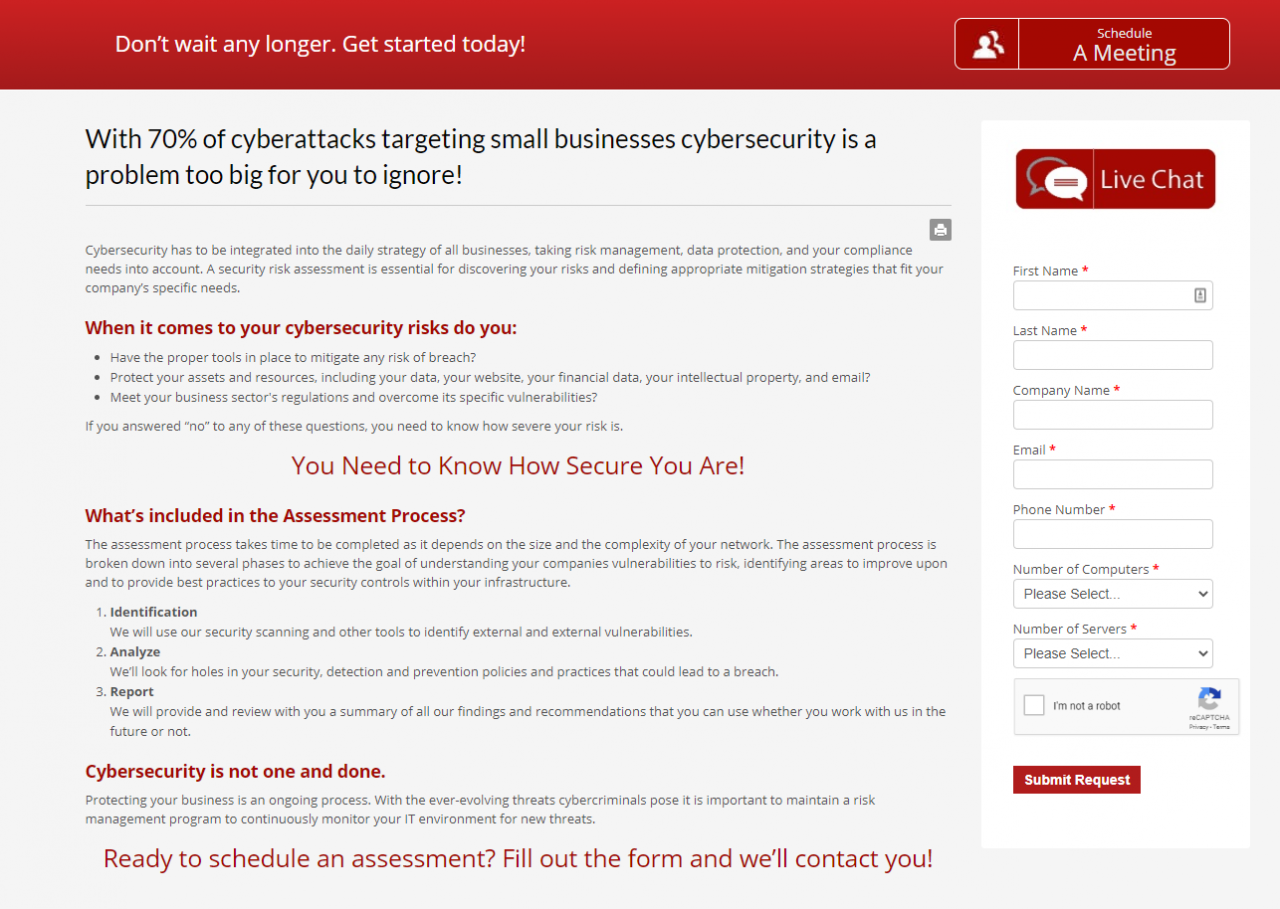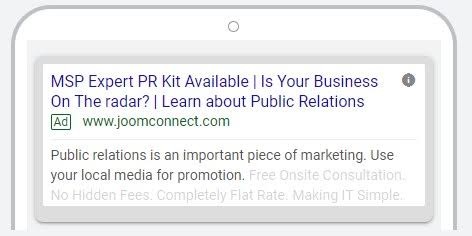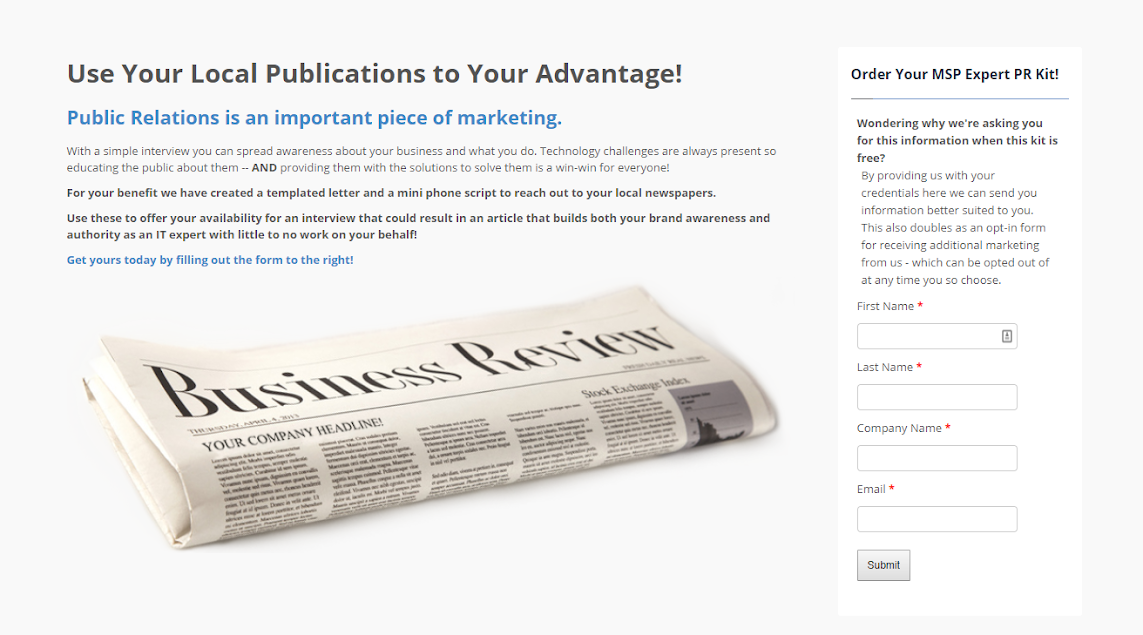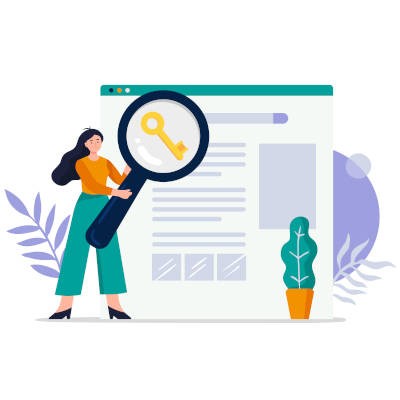JoomConnect Blog
MSP Marketing: Making a Successful Google Ads Landing Page
The Google Ad Quality Score
Ad Quality Score is a measurement that Google uses to estimate the overall quality of your ads, keywords, and landing pages. Having a high AQS (ad quality is measured from 1-10) can have profound effects on your campaign’s success. In fact, a high AQS can increase the number of times your ad runs, as well as its position on the page. Most importantly, ad quality has a direct impact on how much your ad costs per click, which in turn saves you money. Conversely, a low quality score can have an inverse impact on your success.
How is Ad Quality Measured?
Ad quality is measured by how relevant the ads and landing pages are to the user. This means that the ads and landing pages need to relate to each other and have the same message. Successful landing pages provide the user with the experience and information your ad is promoting and most importantly what they expect to see. Google is very cognizant of misleading ads and uses the landing pages the ads link to in order to determine whether or not your audience is receiving the information they are searching for. If the answer is no, or even ‘kind of’ then Google will reduce the value of your ad quality score accordingly.
What Makes for a Great Google Ads Landing Page?
If you're not sure what a landing page is, here is a look at the anatomy of a landing page, to give you a better idea. Next, we have to understand what the purpose of a landing page is. In its simplest form, a landing page is a tool to collect leads. Whether the result is an email address, increased traffic, or even a purchase, the ultimate goal of your landing page is to generate a conversion (sale). Here’s an example of a cybersecurity landing page we use on our Directive site for our MSP.

As always, content is king.
Your landing page must contain relevant, valuable and original content. Moreover, make sure your landing page is directly related to your ad text and keywords. Your landing page needs to be specific to what the user wants. Don’t offer a general service on your landing page, when the user is clicking on an ad for a specific service.
Here’s an example of a landing page and ads being in sync. As you will note, we repeat the same keywords, content and overall theme in both the ad and the landing page. The reason we do this is to ensure that when an MSP’s owner clicks on the link to learn more about using Public Relations in their business, they are taken to a landing page, which specifically discusses how to use Public Relations to increase leads to their MSP.


For example, if your ad promotes a service your MSP offers such as cloud computing, but the landing page is about BDR, the user will feel they have been ‘tricked’, even though BDR can be part of cloud computing. This poor user experience is what Google strives to prevent and in order to reduce the likelihood of this happening, Google monitors ads and their components to ensure the user experience is as high as it can be. The ad quality score provides a numeral metric to guide you in providing a high-quality landing page and user experience.
Offer Something Good!
Nobody does a Google search for a product or service and clicks on an ad with the intent to simply “get in touch.” It’s annoying. It’s indirect. It doesn’t answer questions. To the end-user, it feels like they didn’t get anywhere. It’s best to just hit the back button and find a different result.
Your ads and your landing page should offer something worthwhile. It might be a free consultation, or a valuable whitepaper or guide, or at the very, very least, offer to schedule a meeting. A standard contact form with no real intention and no real value-offer isn’t going to get you conversions.
If you offer a consultation or an audit or an assessment on the ad, make it EXTREMELY clear on your landing page that the form represents the first step to get that process rolling. Again, forms that are just generically labeled as “contact us” or “get in touch” might as well not even be there. If you are offering a dark web scan, the form should say “sign up for your free dark web scan!” If you are offering a free consultation, the form should say “schedule your free consultation and we will reach out to you within a business day.” Try to provide a clear expectation of what they are filling out a form for in the first place.
How to Use the Ad Quality Score to Improve Your Landing Page
When you create ads for Google ads, Google’s team reviews them. If you have a low quality score after the review, that means that Google examined your campaign, followed your ads to their landing pages, and decided they didn’t provide enough relevant information to users. The best case scenario is that the ads receive a low quality score, but still run, albeit sporadically, and the worst case is the ads don’t run at all.
By looking at keywords that are being triggered and their corresponding quality score we gain insights as to how to improve them. The quickest way to improve low quality keywords is by adding a buyer persona to your marketing strategy and putting yourself in the mindset of the person clicking on ads and moving on to your landing pages. Once they arrive at your landing page, what information do they receive?
In this example, IT Tech Support is a triggered keyword (a triggering keyword is a keyword which causes your ad to be shown as a result of a search) and has a quality score of 3 (out of 10). We know the keyword is being searched for and triggering ads, so there is value to it; the next question is how do we increase its quality score, and therefore its value?

When you review your landing page, is IT Tech Support mentioned on the landing page? Are you providing useful information about the service you offer or how investing in IT Tech Support can benefit a business? With a quality score of 3, chances are the answer to those questions is no.
Simply put, if I click on an ad about IT Tech Support, I should be taken to a landing page which provides me information about IT Tech Support. If the ad and keyword isn’t relatable to the landing page, then it isn’t relevant to the user and Google will give it a low quality score, which is what is occurring in this instance.
The way to correct this issue is by reviewing the landing page and making sure that it is relevant to the ad it’s linked to by adding the triggering keyword into the landing page content in a way that is natural and provides answers to the questions the user is searching for.
Finally, it’s not enough to have the user visit the landing page, they need to have a reason to convert. This is why it’s critical that the content gives the user a reason to complete the form, make a call or download the deliverable.
Manage Expectations
The key to online success when marketing your MSP and generating leads is to manage expectations; both the users’ and the search engine’s. As we noted earlier, Google’s primary goal is user experience and that means providing visitors the information they are looking for by directing them to your website. By managing expectations, you are better able to control your messaging and give visitors the experience they expect and the information they are looking for.
Whether you’re using SEO, PPC, or Content Marketing, the closer you are to understanding user intent, the more successful you will be in driving traffic, finding leads and ultimately converting them into sales. If you’re interested in learning more about running a PPC campaign, MSP marketing or how you can use marketing to generate leads, call JoomConnect today to schedule a complimentary consultation. Reach out to us at 888-546-4384!
Comments



